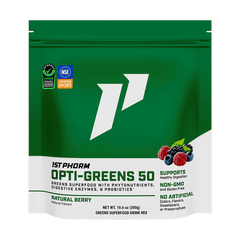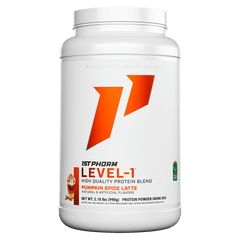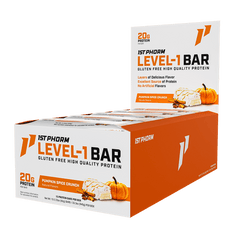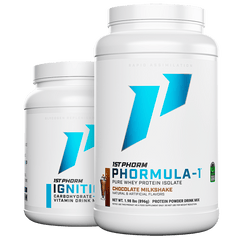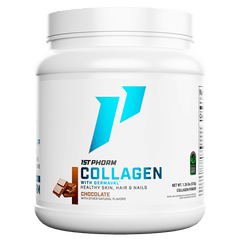The Anatomy of Your Resistance Training Workout – Part 6
Welcome to the final article of a six part series that is focused upon the key variables one must consider when developing or modifying a resistance training program (Kerksick 2011; Spiering et al. 2008). The previous articles have outlined topics such as choice of exercise, order of exercise, intensity, fiber recruitment patterns and volume of exercise. The remaining article will center upon the impact of rest intervals between your sets and how changing them can impact how your body responds to training. Technically speaking, the rest interval is the amount of rest that is taken between each set of the exercises you complete during a weight workout. How many of you out there monitor how much rest you are taking? Probably most of you and as a result you may think you are only taking a minute rest, but are likely taking longer than this. Believe it or not, a good bit of research has been done to identify the impact of changing this variable.
For this reason, distinct recommendations exist for manipulating the amount of rest throughout a workout. Individuals who perform some form of circuit training or are particularly interested in developing muscle endurance should not rest at all or should just rest the amount of time necessary to quickly adjust the equipment, set the resistance and begin lifting. Technically, most recommendations suggest 0 – 15 seconds of rest for people with these goals.
Athletes particularly interested in building muscle are recommended to rest 30 – 60 seconds between sets. When combined with the high volume of work typically performed as part of a bodybuilding workout, short rest periods such as this have been shown repeatedly to augment growth hormone responses (Kraemer et al. 1993; Kraemer et al. 1991; Kraemer et al. 1990) and are also thought to acutely impact other key metabolic proteins inside the muscle tissue. The combination of a relatively high amount of volume with short rest periods results in a workout that produces a great deal of fatigue. It is this fatigue and the changes it makes to your biochemistry that leads to a greater increase in muscle hypertrophy.
If getting stronger is the stated goal, then longer rest periods are needed and around 3 minutes of rest are commonly recommended. Maximal strength efforts typically require a person to be well recovered, which explains why longer rest is advised. Studies have supported this notion where shorter rest periods have been shown to impair performance during subsequent sets (Gotshalk et al. 1997) that over time has been shown to negatively impact the amount of strength which is developed when compared to longer rest periods (Pincivero et al. 2006; Robinson et al. 1995). For almost completely opposite reasons, shorter rest periods are recommended to stimulate growth while strength gains require longer rest.
Finally, if an athlete is interested in developing optimal amounts of power, even longer rest periods are needed (5 – 8 minutes). In this respect, longer rest periods are needed for maximal strength and power development because fatigue needs to be ruled out as a confounding variable. These lifting efforts are considered to be very high quality efforts and when performed in an already fatigued state, the quality of the resulting effort will be decreased. Hypertrophy training on the other hand is more about the quantity of work than the quality of work.
Practically speaking, the length of your chosen rest periods may take a pragmatic approach. If you are most individuals and typically perform around 18 – 21 sets per workout (3 sets of 6 – 7 exercises = 18 – 21 sets), just the amount of time spent resting can range from 20 to 60 minutes if you rest for one minute or three minutes, respectively. If you consider the amount of time spent to actually perform each set of the exercises, a brief warm-up and cool-down and you could easily spend 90 minutes in the gym. For those busy people who can’t spend this much time at the gym, then shorter rest periods are a practical consideration. Fortunately, shorter rest periods are extremely effective at keeping the time spent resting to a minimum and allow for greater metabolic adaptations. While a number of perspectives can be developed on the length of your rest intervals, distinct recommendations have been outlined in this article and should be considered when a specific goal is desired. Happy training!
REFERENCES
- Gotshalk, L.A., C.C. Loebel, B.C. Nindl, M. Putukian, W.J. Sebastianelli, R.U. Newton, K. Hakkinen, and W.J. Kraemer. 1997. Hormonal Responses of Multiset Versus Single-Set Heavy-Resistance Exercise Protocols. Can J Appl Physiol 22 (3):244-55.
- Kerksick, C. 2011. Using a Split-Body Program to Train One, a Few or Multiple Clients. Paper read at NSCA Personal Trainers Conference, 3/20/11, at Las Vegas, NV.
- Kraemer, W.J., S.J. Fleck, J.E. Dziados, E.A. Harman, L.J. Marchitelli, S.E. Gordon, R. Mello, P.N. Frykman, L.P. Koziris, and N.T. Triplett. 1993. Changes in Hormonal Concentrations after Different Heavy-Resistance Exercise Protocols in Women. J Appl Physiol 75 (2):594-604.
- Kraemer, W.J., S.E. Gordon, S.J. Fleck, L.J. Marchitelli, R. Mello, J.E. Dziados, K. Friedl, E. Harman, C. Maresh, and A.C. Fry. 1991. Endogenous Anabolic Hormonal and Growth Factor Responses to Heavy Resistance Exercise in Males and Females. Int J Sports Med 12 (2):228-35.
- Kraemer, W.J., L. Marchitelli, S.E. Gordon, E. Harman, J.E. Dziados, R. Mello, P. Frykman, D. Mccurry, and S.J. Fleck. 1990. Hormonal and Growth Factor Responses to Heavy Resistance Exercise Protocols. J Appl Physiol 69 (4):1442-50.
- Pincivero, D.M., V. Gandhi, M.K. Timmons, and A.J. Coelho. 2006. Quadriceps Femoris Electromyogram During Concentric, Isometric and Eccentric Phases of Fatiguing Dynamic Knee Extensions. J Biomech 39 (2):246-54.
- Robinson, J.M., M.H. Stone, and R.L. Johnson. 1995. Effects of Different Weight Training Exercise/Rest Intervals on Strength, Power, and High Intensity Exercise Endurance. J Strength Cond Res 9:216-21.
- Spiering, B.A., W.J. Kraemer, J.M. Anderson, L.E. Armstrong, B.C. Nindl, J.S. Volek, and C.M. Maresh. 2008. Resistance Exercise Biology: Manipulation of Resistance Exercise Programme Variables Determines the Responses of Cellular and Molecular Signalling Pathways. Sports Med 38 (7):527-40.


